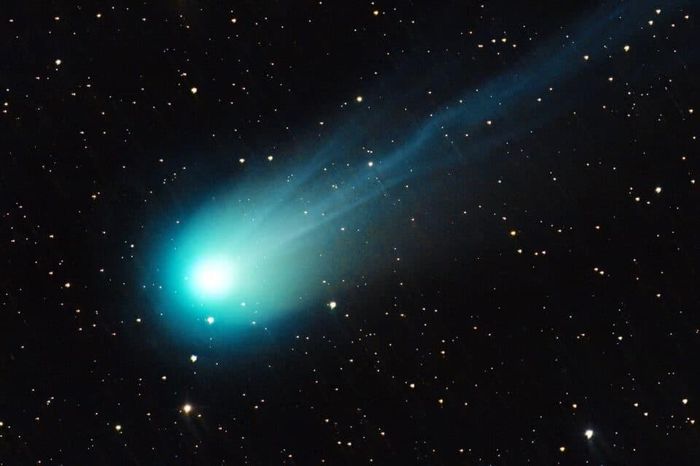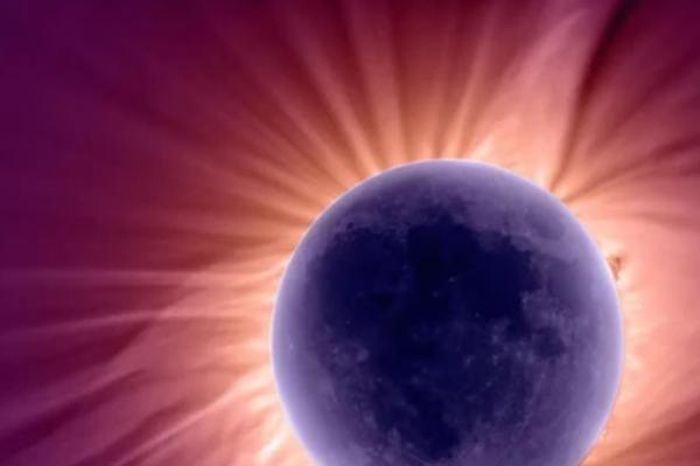Why do total solar eclipses occur more frequently in the Northern Hemisphere than in the Southern Hemisphere?
At some times of the year, the Earth is a little farther from the Sun – so the sun appears smaller than usual. During these times, when the Earth, moon, and sun are aligned, it is easier for the moon to effectively block the sun, causing a total solar eclipse.
But at other times of the year, the Earth is closer to the Sun so the Sun appears larger than usual. When the Earth, moon, and sun align at these times of the year, the Sun appears larger and the moon may not completely block it, creating an annular solar eclipse.
In both hemispheres, solar eclipses usually occur in the summer, when the sun spends more time above the horizon and it must be daytime for the eclipse to be visible. During summer, the Northern Hemisphere is at the farthest point of Earth's orbit, while Summer in the Southern Hemisphere occurs at the closest point. As a result, total solar eclipses are more likely to occur north of the equator.
But even in the Northern Hemisphere, total solar eclipses are more common at higher latitudes. There are a few different reasons why this might happen. First, at the highest latitudes, the summer sun rarely dips below the horizon, meaning there is sunlight even at night, in contrast to lower latitudes where nights are dark. summer.
Then there's the Earth's curvature, which causes the moon's shadow to fall at a shallower angle at higher latitudes; The path of an eclipse near the Arctic Circle can be four times wider than an eclipse at lower latitudes. So, according to statistics, the best place to view a total solar eclipse is around 80 degrees North
If you live in North America, you'll have a chance to enjoy the total solar eclipse on Monday, April 8, which will take a long path across Canada, the US and Mexico.
You should read it
- August 21, 2017: NASA will broadcast 360-degree videos directly on Facebook's transcontinental eclipse phenomenon on Facebook, you can see
- America must prepare 'carefully' for the Japanese Food Festival which will take place on August 21
- Admire the best images of the total solar eclipse on August 21
- Amazing phenomenon - the 'annular eclipse' glows in the sky today
- Do you know what a solar eclipse looks from the Moon?
- What is a solar eclipse? When does a solar eclipse take place?
- NASA is about to launch 3 rockets to 'penetrate' the solar eclipse
- What is a lunar eclipse? Lunar eclipse occurs when?
May be interested
- 100,000 billion cicadas came to life at the same time in the US after a total solar eclipse
 after a total solar eclipse, up to 100 trillion cicadas are expected to emerge from hibernation in the us, creating a rare sight.
after a total solar eclipse, up to 100 trillion cicadas are expected to emerge from hibernation in the us, creating a rare sight. - How hot is the planet of Mercury?
 the temperature on venus's surface is much hotter than the temperature on mercury's surface, although the distance from the sun to venus is twice as far from the sun to mercury's planet. why is this and how hot the planet of mercury is?
the temperature on venus's surface is much hotter than the temperature on mercury's surface, although the distance from the sun to venus is twice as far from the sun to mercury's planet. why is this and how hot the planet of mercury is? - The world's first solar tram officially launched
 people living on the northern coast of new south wales in australia will have the opportunity to experience new, more sustainable transportation services. it is a new transport facility described by byron bay railway company as the world's first solar ship.
people living on the northern coast of new south wales in australia will have the opportunity to experience new, more sustainable transportation services. it is a new transport facility described by byron bay railway company as the world's first solar ship. - An 'alien' object will fly over Earth in 2017?
 a strange object in the center of the sun's orbit was discovered by astronomer james scotti of the university of arizona (usa) in 1991 and was named 1991 vg. it will sweep through the earth in the summer of 2017 in the southern hemisphere. now scientists have not determined exactly what that object is.
a strange object in the center of the sun's orbit was discovered by astronomer james scotti of the university of arizona (usa) in 1991 and was named 1991 vg. it will sweep through the earth in the summer of 2017 in the southern hemisphere. now scientists have not determined exactly what that object is. - The 'Devil's Comet' appears with a total solar eclipse
 the 'devil comet' just had an eruption of dust, gas and ice during its first flyby of the earth in 71 years, taking place at the same time as the total solar eclipse on april 8.
the 'devil comet' just had an eruption of dust, gas and ice during its first flyby of the earth in 71 years, taking place at the same time as the total solar eclipse on april 8. - NASA is about to launch three rockets to penetrate the total solar eclipse on April 8
 according to nasa, three rockets carrying many modern equipment will fly into the sky on the day of the total solar eclipse april 8 to learn about this astronomical phenomenon.
according to nasa, three rockets carrying many modern equipment will fly into the sky on the day of the total solar eclipse april 8 to learn about this astronomical phenomenon. - Admire the majestic image of the 'Southern Pinwheel' galaxy
 a precious new image captured by the dark energy camera (decam) system reveals a dramatic astronomical scene.
a precious new image captured by the dark energy camera (decam) system reveals a dramatic astronomical scene. - Discover the black hole closest to Earth, located in the star system that we can see with the naked eye
 if you stand in the southern hemisphere on a cold day, look up to the sky to find the black hole closest to you that science has discovered.
if you stand in the southern hemisphere on a cold day, look up to the sky to find the black hole closest to you that science has discovered. - What is solar storm? How solar storm affects the Earth
 a solar storm can release the energy equivalent of millions of 100-megaton (100 million tons) hydrogen bombs exploding at the same time.
a solar storm can release the energy equivalent of millions of 100-megaton (100 million tons) hydrogen bombs exploding at the same time. - NASA is about to launch 3 rockets to 'penetrate' the solar eclipse
 according to nasa, three rockets carrying many devices will fly into the sky on april 8, while the united states is covered by a total solar eclipse.
according to nasa, three rockets carrying many devices will fly into the sky on april 8, while the united states is covered by a total solar eclipse.










 Origin of ancient superstitions in the world
Origin of ancient superstitions in the world Japan's lander survives second night on the moon
Japan's lander survives second night on the moon One in every 13 bridges in the US is deteriorating
One in every 13 bridges in the US is deteriorating April Fools' Day originated from which country?
April Fools' Day originated from which country? The tunnel transports people with magnets at up to 1,000km/h
The tunnel transports people with magnets at up to 1,000km/h The times the US lost nuclear bombs, they have never been found
The times the US lost nuclear bombs, they have never been found